June 20, 2025 | 00:16 GMT +7
June 20, 2025 | 00:16 GMT +7
Hotline: 0913.378.918
June 20, 2025 | 00:16 GMT +7
Hotline: 0913.378.918
In recent years, tourism in Mu Cang Chai has seen remarkable growth, unlocking potential and making it one of the most attractive destinations in the Northwest region. Known not only for its magnificent mountains, mysterious forests, and surreal terraced fields that captivate visitors, this land also boasts a rich cultural heritage and unique ethnic identities for travelers to experience and explore.
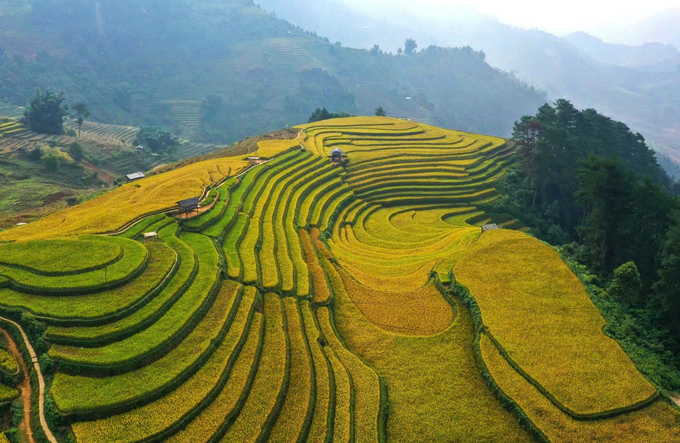
Terraced fields have a unique beauty each season, captivating tourists to explore and experience. Photo: Thanh Tien.
Starting from early September, the terraced fields turn golden, signaling the busiest tourism season of the year in Mu Cang Chai. Visitors from all over come to witness these masterpiece landscapes adorned with a colorful palette under the vast sky.
According to the locals, the “golden season” is the peak tourist time, with domestic travelers typically making short visits to take photos, enjoy the scenery, and savor the delicious local cuisine of the Northwest. Foreign tourists, however, visit Mu Cang Chai throughout the year, often immersing themselves in the farming activities of the Hmong people, exploring local customs, and joining locals in tilling soil, plowing fields, and harvesting rice.
Mr. Giang A De, owner of Hello Mu Cang Chai homestay, shares that the terraced fields are beautifully woven like embroidery, each season showcasing its own charm. During the water season from May to June, early rains fill the fields, creating pools of sparkling water that reflect the sunlight, turning the fields into a breathtaking natural scene.
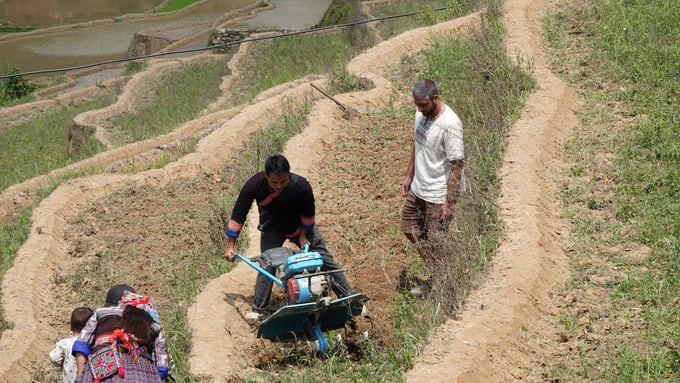
Mr. Giang A De shows how to plow the fields with a machine for tourists. Photo: Thanh Tien.
The golden season in Mu Cang Chai usually spans from September to October, adorning the landscape with a splendid charm as the terraced fields are covered in the golden hue of ripe rice, forming a stunning picture.
These masterpieces are crafted by the skillful, hardworking hands of farmers over hundreds of years. Each layer of green and golden rice embodies a history of cultivation techniques, spirituality, culture, and ethnic heritage. This art reflects collective skills in water management, crop planting, and harvesting that have been passed down through generations.
According to Mr. De, his homestay welcomes a few hundred tourists each year, with few Vietnamese guests who stay only 1-2 days. Most visitors are foreigners. His homestay, located on the mountainside and surrounded by layered terraces, allows guests to immerse themselves in nature from dawn to dusk, enjoying meals or sipping tea by the rice fields.
"After a few years of running the homestay, my wife and I can now communicate well with guests in English. I serve as a guide and interpreter so tourists can interact with locals. Most visitors seek novelty and uniqueness in culture, lifestyle, and nature to relieve stress. They love learning how to plow, build field embankments, plant rice, harvest crops, or even catch fish in the stream. They’re curious about everything and willingly pay locals for their guidance, providing additional income for everyone, and this makes tourism flourish" Mr. De said with a smile.
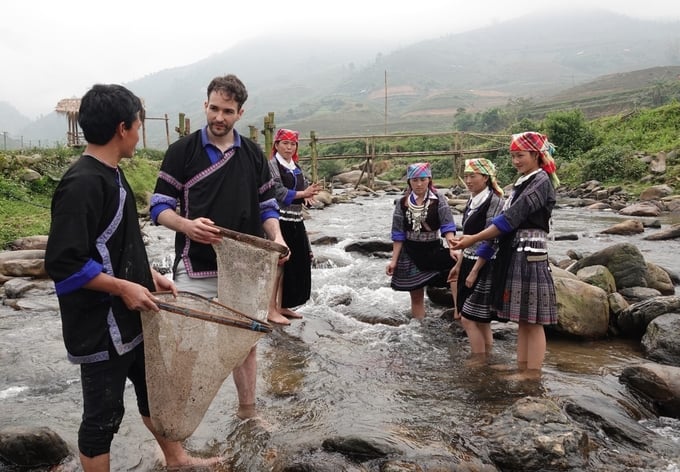
Mu Cang Chai now offers numerous experiential activities for tourists. Photo: Thanh Tien.
Mr. Svatos, a tourist from the Czech Republic, expressed his awe during his first trip to Vietnam, particularly at the beauty of Mu Cang Chai with its natural scenery, climate, and the warmth of the locals.
“The other day, a woman showed me how to harvest rice on the terraces with a small sickle. It was quite challenging, requiring a lot of bending, which made my back sore. The people here are small in stature but impressively resilient. Yesterday, Mr. De took me on a mountain hike to chase clouds, and in the afternoon, we waded through streams to catch fish with nets. I caught a few small fish and snails in the crevices of rocks—an incredible experience,” Mr. Svatos said excitedly.
French tourist Christian Gondonneau shared that he first visited Mu Cang Chai in 2018 during the water season. Having previously only seen Vietnam on TV, he was amazed by the breathtaking scenery. He and his wife experienced a rice-plowing session like real farmers, deepening their understanding of the hard work behind the terraced fields.
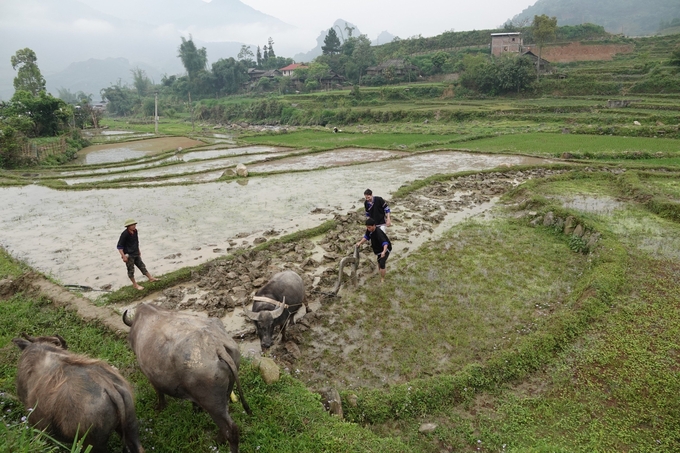
Many tourists join locals in plowing and harrowing the fields with buffalo. Photo: Thanh Tien.
Impressed by this experience, Mr. Christian Gondonneau returned to Mu Cang Chai this golden season with his wife and daughter. “I love the beautiful scenery here, especially in the early morning when the air is fresh and cool, surrounded by terraced fields in the peak of the golden rice season. Watching the locals harvest rice and thresh the grains by hitting the rice stalks against a wooden bin, I joined in, and the villagers warmly taught us. It was exhausting but absolutely wonderful,” shared the French visitor.
Now, no matter the season, visitors to Mu Cang Chai can immerse themselves in the majestic, unspoiled nature, enjoying the pure, cool air that is rare to find elsewhere.
Tourists experience rice harvesting on the terraced fields. Video: Thanh Tien.
According to Mr. Trinh The Binh, Head of the Culture and Information Department of Mu Cang Chai district, nature has blessed this place with majestic landscapes, while the terraced fields are the laborious creations of skilled farmers over centuries.
The rice culture on these terraced fields plays a significant role in attracting tourists, especially international visitors who are eager to explore and experience. This is also an opportunity for local homestays to develop, as there’s a growing demand to live and work alongside the locals in daily farming activities. Mù Cang Chải currently welcomes over 300,000 visitors each year, including nearly 60,000 international tourists, and the number is steadily increasing.
Translated by Kieu Chi
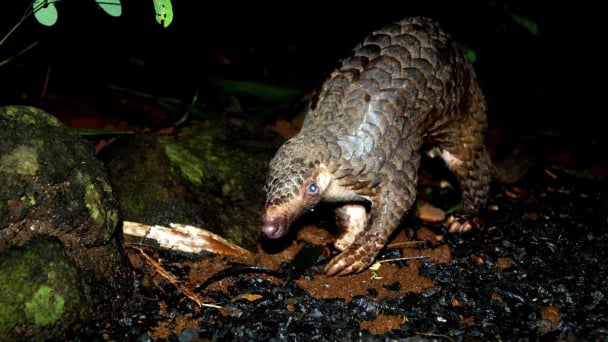
(VAN) Biodiversity is being threatened by traditional remedies made from wildlife. Traditional medicine and humans must change to live in harmony with nature.

(VAN) Agrifood investment and finance solutions for people and the planet.
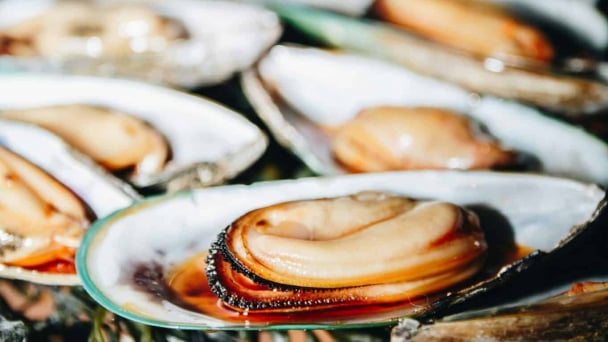
(VAN) Microplastic contamination has become pervasive in seafood, posing unprecedented challenges for food safety and marine ecosystems.
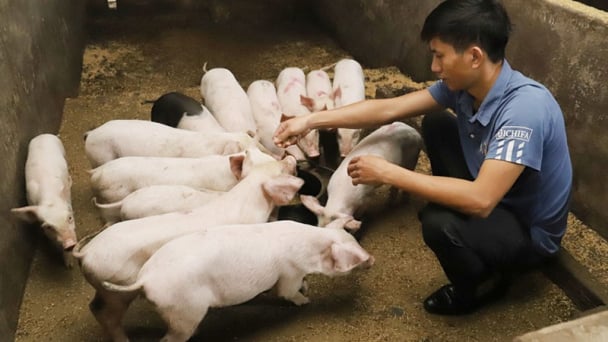
(VAN) Proactively using vaccines, combined with transport control and enhanced surveillance, is the only viable path toward biosecure and sustainable livestock production in Vietnam.
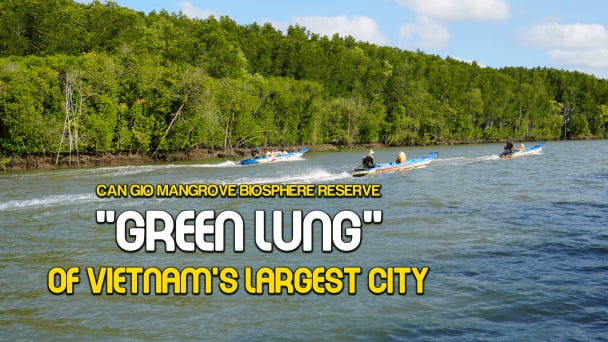
(VAN) Located in the southeast of Ho Chi Minh City, the Can Gio Mangrove Biosphere Reserve is considered the ‘green lung,’ a solid shield protecting the city.

(VAN) To address plastic pollution, closing the plastic recycling cycle will bring significant economic and environmental benefits.
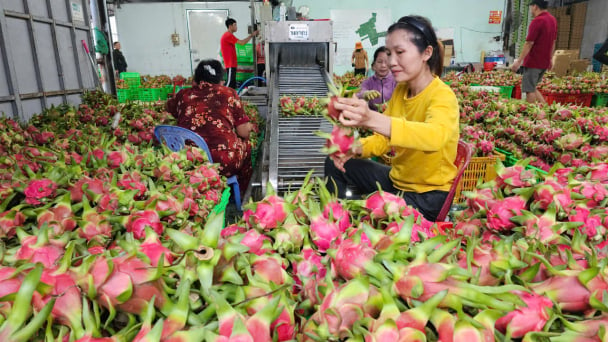
(VAN) According to the Binh Thuan Department of Industry and Trade, in the first five months of 2025, Binh Thuan's dragon fruit export turnover increased by 20.65% compared to the same period last year.